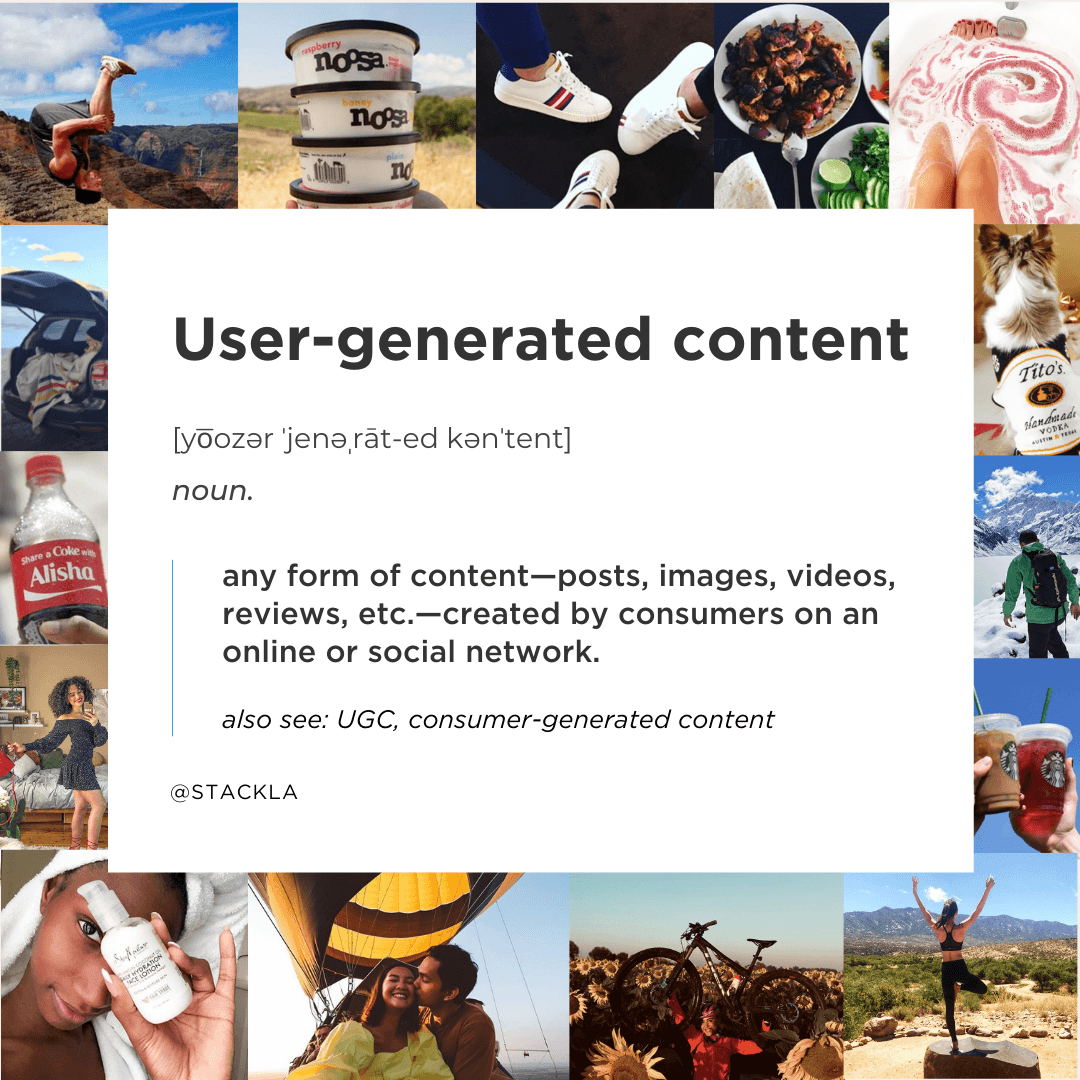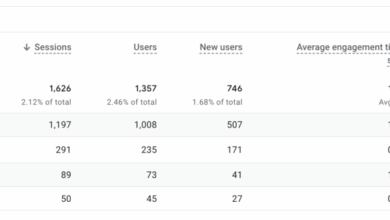User generated content strategy is key to modern marketing. It’s about harnessing the power of your audience to create and share content that resonates with your brand. This comprehensive guide dives into defining UGC, developing effective strategies, measuring impact, building community, navigating legal considerations, and integrating UGC into your broader marketing efforts.
From crafting compelling incentives to moderating user-generated content, this strategy ensures that your brand is constantly evolving and connecting with your audience in meaningful ways. We’ll explore the crucial steps for fostering authentic engagement and transforming your audience into brand advocates.
Defining User-Generated Content Strategy
User-generated content (UGC) is a powerful force in today’s digital landscape. It’s more than just random comments or posts; it’s a valuable resource for businesses and brands to connect with their audience on a deeper level. Understanding the nuances of UGC is crucial for crafting effective strategies. It allows brands to tap into authentic voices, fostering trust and driving engagement.UGC differs significantly from traditional marketing content.
Unlike professionally produced materials, user-generated content originates from customers, employees, or enthusiasts. This inherent authenticity resonates with consumers, who often perceive UGC as more credible and trustworthy. This authenticity often leads to higher conversion rates and stronger brand loyalty.
Defining User-Generated Content
User-generated content (UGC) encompasses any form of content created by users, rather than by the brand or organization itself. This includes a wide spectrum of formats and platforms, making it a multifaceted asset for modern marketing strategies. The key differentiator is the source: users themselves, not professional creators.
Characteristics of User-Generated Content
UGC possesses several key characteristics that set it apart from other content forms. Firstly, its authenticity is paramount, often viewed as more credible than brand-produced content. Secondly, it’s highly engaging, prompting interaction and fostering a sense of community. Thirdly, it demonstrates a strong level of trust between consumers and brands, often stemming from real-world experiences shared by peers.
Types of User-Generated Content
User-generated content takes many forms, reflecting the diverse ways people interact online. Understanding these various types allows brands to effectively leverage the right content for their needs.
| Type | Example | Typical Platforms |
|---|---|---|
| Reviews | A customer’s detailed review of a product on Amazon or Yelp, including pros, cons, and overall rating. | E-commerce sites, review platforms, social media |
| Comments | A user’s response to a brand’s social media post or blog article, expressing opinions or asking questions. | Social media platforms, blogs, forums |
| Social Media Posts | A user sharing their experience with a product on Instagram or Twitter, often featuring photos or videos. | Instagram, TikTok, Twitter, Facebook |
| User-Submitted Photos/Videos | A customer posting a picture of themselves using a product on Instagram with a branded hashtag, or a video showcasing a product’s functionality. | Instagram, Facebook, TikTok, YouTube |
| Forum Discussions | A discussion thread on Reddit or a dedicated forum, providing insights and feedback on a product or service. | Reddit, dedicated forums, online communities |
Strategies for Implementing UGC
User-generated content (UGC) is a powerful tool for businesses to connect with their audience and build brand loyalty. A well-executed UGC strategy can significantly enhance brand perception, increase engagement, and drive sales. This section delves into practical strategies for implementing a robust UGC program, focusing on encouraging user participation and analyzing existing content.Implementing a successful UGC strategy requires a thoughtful framework that goes beyond simple incentives.
It necessitates understanding the target audience, aligning content with brand identity, and providing a clear path for users to create and share their experiences. A well-defined strategy fosters a sense of community and encourages genuine engagement.
Designing a Robust UGC Strategy Framework
A robust UGC strategy framework should encompass clear goals, a well-defined target audience, and a structured process for content creation and sharing. This framework should Artikel the desired outcomes, such as increased brand awareness, improved customer relationships, or driving sales. It should also detail how the UGC will be integrated into the overall marketing strategy. A crucial component is understanding the brand identity and aligning the UGC with the existing brand values and aesthetic.
Methods for Encouraging User Content Creation and Sharing
Encouraging user participation hinges on providing compelling reasons for users to create and share content. Clear guidelines and an easy-to-use platform are essential. This includes creating dedicated spaces for user-generated content, such as social media groups, dedicated hashtag campaigns, or even dedicated websites or apps.
- Incentivizing Participation: Offering rewards for content creation, such as discounts, exclusive merchandise, or social media recognition, is a powerful motivator. Contests and giveaways, with clearly defined rules, can generate excitement and encourage participation.
- Creating a Sense of Community: Interactive Q&A sessions, online forums, or user groups can foster a sense of community and encourage users to share their experiences and connect with each other.
- Providing Clear Guidelines: Detailed instructions and guidelines on the types of content desired and the acceptable formats can help ensure consistency and quality.
Comparing and Contrasting Incentive Approaches
Different approaches to incentivizing user participation have varying degrees of effectiveness. Some approaches focus on immediate rewards, while others emphasize long-term engagement and community building.
| Incentive Approach | Description | Pros | Cons |
|---|---|---|---|
| Contests and Giveaways | Short-term, focused on immediate engagement | High visibility, generates buzz | Can be difficult to maintain long-term interest |
| Loyalty Programs | Long-term, builds lasting relationships | Creates a loyal customer base | Can be complex to implement and track |
| Social Media Recognition | Leverages social validation | Encourages sharing and engagement | Reliance on social media algorithms |
Examples of Successful UGC Campaigns
Successful campaigns often leverage a combination of approaches, tailoring the strategy to the specific brand and target audience. For example, a fashion brand might host a photo contest with a prize for the most creative outfit.
- Nike’s “Just Do It” campaign famously encouraged users to share their fitness journeys, fostering a strong sense of community and inspiring others.
- Starbucks’s use of user-generated content in their social media campaigns, often showcasing customer photos and stories, helps build a warm and inviting brand image.
Identifying and Analyzing Existing UGC
A crucial aspect of any UGC strategy is the ability to identify and analyze existing user-generated content. Tools and strategies for tracking mentions, hashtags, and relevant s can be implemented.
- Monitoring Social Media Platforms: Utilizing social listening tools allows tracking conversations and identifying trends.
- Analyzing Content Performance: Monitoring engagement metrics like likes, shares, and comments on user-generated content provides insights into what resonates with the audience.
- Sentiment Analysis: Tools can analyze the tone and sentiment expressed in user-generated content, allowing for a better understanding of public perception.
Measuring the Impact of UGC Strategies: User Generated Content Strategy
User-generated content (UGC) is a powerful tool for boosting brand awareness and fostering customer engagement. However, its effectiveness hinges on a robust measurement strategy. Understanding the impact of UGC initiatives allows businesses to refine their strategies, optimize campaigns, and maximize ROI. This crucial step involves analyzing data, identifying trends, and ultimately, using insights to drive future success.A well-defined measurement plan for UGC initiatives provides a framework for evaluating the campaign’s performance.
It helps determine whether the strategy aligns with the intended goals and provides actionable feedback for improvement. This process requires a clear understanding of the metrics that accurately reflect the success of the UGC strategy.
Defining Key Metrics for Evaluation
Understanding the metrics for evaluating UGC success is vital. These metrics should be specific to the goals of the campaign and the target audience. This allows for a focused evaluation that provides relevant insights.
- Engagement Metrics: Engagement metrics measure how actively users interact with the UGC. These include likes, comments, shares, retweets, and replies. Monitoring these metrics provides insights into the level of user interest and enthusiasm for the content. For example, a high number of likes and comments on a social media post indicate a high level of user engagement, suggesting that the content resonates with the target audience.
- Reach Metrics: Reach metrics track the extent of content visibility and distribution. This includes the number of unique users who saw the UGC, the number of impressions generated, and the overall distribution across various platforms. Tracking reach allows businesses to gauge the effectiveness of their content distribution strategy and identify channels that are driving the most visibility.
- Brand Perception Metrics: Brand perception metrics evaluate how the UGC influences public opinion about the brand. This includes sentiment analysis of comments, mentions, and overall discussions surrounding the brand. Positive sentiment scores indicate a favorable brand perception, while negative scores suggest areas needing improvement. For instance, if user-generated reviews overwhelmingly praise a product’s quality, it strengthens the brand’s reputation for reliability and excellence.
Analyzing Data to Optimize Strategies
Data analysis plays a pivotal role in optimizing UGC strategies. By systematically collecting and analyzing data, businesses can identify trends, patterns, and areas for improvement.
- Trend Identification: Identifying trends and patterns in user-generated content allows for strategic adjustments to maximize impact. Analyzing data over time reveals recurring themes, popular topics, and preferred formats. For example, if user-generated photos of a product consistently feature a specific accessory, the brand could consider incorporating that accessory into future product designs or marketing campaigns.
- Sentiment Analysis: Sentiment analysis, a critical aspect of data analysis, helps determine the emotional tone surrounding the brand and its products. By analyzing comments, reviews, and social media posts, businesses can gain a deeper understanding of how users perceive their brand. This allows for proactive adjustments to enhance the brand’s reputation and address customer concerns promptly.
- Performance Benchmarking: Benchmarking against competitors and industry standards allows for a comparison of performance. This provides a clearer understanding of how the UGC strategy stacks up against industry best practices and competitor initiatives. This helps businesses make informed decisions and fine-tune their UGC strategy to gain a competitive edge.
Example of Data Collection and Analysis
Collecting data involves utilizing analytics tools to track key metrics, such as website traffic, social media engagement, and online reviews. Data analysis techniques can then be used to identify trends and patterns. For instance, if a particular hashtag consistently garners a high volume of user-generated content and positive feedback, the brand can leverage this hashtag for future campaigns.
User-generated content strategies are crucial for engagement, and a recent event like the arrests related to NBA All-Star Weekend in Oakland, as detailed in this article arrests enforcement nba all star weekend oakland , highlights the need for careful consideration of how this type of content can be leveraged. Monitoring and responding to online chatter related to such events is key to a successful user-generated content strategy.
This allows for a more targeted and efficient use of resources.
Building Community and Engagement

Cultivating a thriving online community around user-generated content (UGC) is crucial for its success. A vibrant community fosters engagement, encourages participation, and ultimately drives the creation of more valuable and authentic content. This, in turn, strengthens brand loyalty and builds a stronger connection with your audience. Engaging with your community requires a proactive and responsive approach to feedback and interaction.A well-managed UGC strategy isn’t just about collecting content; it’s about building a space where users feel heard, valued, and empowered to contribute.
This requires a conscious effort to create a culture of participation and mutual respect, which in turn fosters the creation of a thriving online community.
Strategies for Fostering Interaction and Feedback
To foster a dynamic and engaging community, several strategies are crucial. Encouraging open dialogue and providing a platform for feedback are essential elements. Active moderation and timely responses to user comments are vital to maintain a positive and productive environment.
- Prompt and Consistent Engagement: Regularly engaging with users’ posts, comments, and feedback demonstrates value and encourages further participation. This could include liking, sharing, and responding to comments. This builds a sense of community and makes users feel heard.
- Interactive Contests and Challenges: Contests and challenges are effective methods for boosting engagement and inspiring creativity. These activities encourage participation, generate excitement, and provide a platform for users to showcase their skills and talents.
- Community Guidelines and Moderation: Clear community guidelines are essential to maintaining a positive and productive environment. Establish clear rules regarding appropriate content, respectful interaction, and prohibited behaviors. Effective moderation ensures adherence to these guidelines, prevents negativity, and protects the overall community experience.
Examples of Communities that Excel at User Engagement
Many successful online communities excel at user engagement, demonstrating effective UGC strategies. Learning from these examples can inform and inspire your own approach.
- Gaming Communities: Many online gaming communities thrive on user-generated content, fostering vibrant discussions, showcasing gameplay, and sharing tips and strategies. Platforms like Reddit and Discord facilitate these communities, providing spaces for interaction and feedback.
- Product Review Platforms: Websites dedicated to product reviews often feature a robust user-generated content component. These platforms encourage user reviews and ratings, providing valuable insights for consumers and businesses alike. The active engagement among users is a key component of their success.
- Social Media Pages with Strong Fan Bases: Social media pages with significant followings frequently feature user-generated content, encouraging interaction and building a strong sense of community. Brands that effectively leverage user-generated content often see increased engagement and brand loyalty.
Framework for Building a Strong User Base
Building a strong user base is essential for a successful UGC strategy. This framework Artikels key steps for attracting, engaging, and retaining users.
- Clearly Define Your Target Audience: Understanding your target audience is crucial for developing content that resonates with them and attracting the right users to your platform.
- Create a User-Friendly Platform: Ensure your platform is easy to navigate and use, encouraging participation and making the experience enjoyable for users. Intuitive design and a clear call to action are vital.
- Provide Incentives and Rewards: Offering incentives, such as discounts, recognition, or exclusive access, can motivate users to participate and share content. This incentivization can be highly effective in encouraging active participation.
Responding to User Comments and Feedback
Responding effectively to user comments and feedback is vital for building a positive and thriving community. A proactive and responsive approach shows users that their input is valued.
- Acknowledge and Thank Users: Acknowledging and thanking users for their comments and contributions creates a sense of value and encourages further participation.
- Address Concerns and Complaints Promptly: Addressing concerns and complaints promptly and professionally can help resolve issues and maintain a positive community atmosphere. A prompt and effective response shows users that their concerns are important.
- Use Feedback for Improvement: Actively seeking and using feedback from users to improve your platform, content, and community experience shows that you value their input.
Legal and Ethical Considerations

User-generated content (UGC) strategies offer immense potential for engagement and brand building. However, navigating the legal and ethical landscape surrounding UGC is crucial. Careful consideration of user rights, data privacy, and potential misuse is essential for successful and responsible implementation. Failure to address these issues can lead to significant reputational damage and legal challenges.A robust UGC strategy requires a proactive approach to legal and ethical concerns, ensuring compliance with relevant regulations and fostering trust with users.
This includes establishing clear policies, obtaining informed consent, and proactively addressing potential issues.
Identifying Legal and Ethical Issues
The collection, use, and sharing of UGC raise several legal and ethical issues. Copyright infringement, defamation, and privacy violations are potential risks. Misrepresenting user intent or context can also cause problems. Understanding these complexities is paramount to a successful UGC strategy.
Obtaining User Consent and Permissions
Clear and concise consent mechanisms are vital. Users must understand how their content will be used, shared, and stored. Transparency about data collection and usage practices is crucial. Explicit permission for specific uses, such as commercial purposes or resharing, is essential. Users should have control over the usage of their content.
Detailed, easily accessible policies explaining data handling and user rights are necessary.
Examples of Ethical Dilemmas in Managing UGC
Identifying and resolving potential ethical conflicts is essential. A common dilemma arises when user-generated content contains potentially offensive or harmful material. Balancing freedom of expression with the need to maintain a safe and respectful environment is a challenge. Another concern involves the potential for misrepresentation of user intent. Distinguishing between genuine user feedback and fabricated content requires careful monitoring and moderation techniques.
Policies for Handling Inappropriate or Offensive Content
Establishing clear guidelines for handling inappropriate content is necessary. A content moderation policy should address offensive language, hate speech, and harassment. The policy must balance freedom of expression with the need to protect users and maintain a positive community atmosphere. Automated filtering tools and human review processes can be used in tandem to effectively address such issues.
Content should be reviewed promptly and decisions should be documented and justifiable.
Copyright and Intellectual Property in UGC Strategies
Copyright and intellectual property laws play a significant role in UGC strategies. Content creators retain ownership of their original work. Licensing agreements or clear statements of usage rights are needed when re-sharing UGC. Determining who owns the copyright in UGC generated for a company or brand can be complex. Understanding the intricacies of copyright and intellectual property is crucial for compliance and to avoid legal issues.
Using creative commons licenses can offer flexibility and transparency in UGC use.
User-generated content strategies are crucial for engagement, but robust security is key. Implementing secure authentication methods like passkeys FIDO authentication solutions is essential for protecting user data and fostering trust. This, in turn, bolsters user confidence and encourages a thriving user-generated content ecosystem.
Content Moderation and Community Guidelines
User-generated content (UGC) thrives on engagement and diverse perspectives. However, this vibrant exchange also necessitates careful management to ensure a positive and safe environment for all participants. Effective content moderation and well-defined community guidelines are crucial for maintaining the integrity and appeal of UGC platforms. This section explores the vital role of these elements in a successful UGC strategy.
Content Moderation Guidelines
Content moderation is the process of reviewing and potentially removing or altering user-generated content. A robust moderation policy should address various scenarios, from inappropriate language and hate speech to copyright infringement and harassment. The policy should be clearly communicated to users and consistently applied to ensure fairness and transparency.
- Establish clear categories of unacceptable content. This includes, but is not limited to, hate speech, harassment, defamation, incitement to violence, and content that violates copyright or intellectual property laws. Defining these categories prevents ambiguity and allows for consistent moderation across different UGC platforms.
- Develop a tiered review process. A multi-layered system can improve efficiency. For example, initial screening can be automated, followed by human review for more complex or ambiguous cases. This helps to balance speed and accuracy.
- Employ appropriate technological tools. Utilizing filtering and content analysis tools can help automate the detection of inappropriate content, freeing up human moderators for more nuanced cases. However, these tools should be used in conjunction with human oversight, as they can sometimes misinterpret context.
- Train moderators thoroughly. Effective moderators need a comprehensive understanding of the platform’s community guidelines, the types of content deemed inappropriate, and the procedures for handling different situations. This training should include practical examples and scenario-based exercises.
Community Guidelines
Community guidelines are the explicit rules that govern user behavior on a platform. These guidelines should clearly Artikel expectations for users, helping them understand acceptable and unacceptable conduct within the community. They are essential in shaping the tone and character of the platform.
- Clarity and Conciseness. Guidelines should be easy to understand and avoid ambiguity. Use simple language, avoid jargon, and provide clear examples. A well-structured format, such as bullet points or numbered lists, is often helpful. For instance, a rule against hate speech should be clearly defined and not rely on vague or subjective interpretations.
- Specificity and Scope. The guidelines should be tailored to the specific platform and the type of content being generated. They should address potential issues relevant to the community, such as privacy concerns, intellectual property rights, and online safety. This includes specifics about what is considered harassment or defamation in the context of the platform.
- Transparency and Accessibility. The guidelines should be easily accessible to all users, prominently displayed on the platform, and updated regularly. Transparency is key; users need to know the rules to avoid breaking them. This includes clear mechanisms for feedback on the guidelines themselves.
Complaint and Dispute Resolution
A well-defined process for handling complaints and disputes is essential to maintain trust and fairness within the UGC community. It’s critical to ensure that users feel heard and that issues are addressed promptly and effectively.
- Establish a clear reporting mechanism. Users should be able to report inappropriate content or user behavior easily and securely. A dedicated feedback form, email address, or in-app reporting tool can help.
- Timely investigation. Complaints should be investigated promptly and thoroughly. The review process should be transparent, and users should be kept informed of the progress. This includes establishing timeframes for investigations and providing updates to those who have filed complaints.
- Fair and Consistent Resolution. Decisions should be based on the community guidelines and consistently applied across all cases. Providing clear justifications for decisions helps to build trust and prevent perceived bias. This includes clear escalation paths for complex issues.
Comparing Moderation Approaches
Different moderation approaches have varying strengths and weaknesses. The best approach often depends on the specific platform and its goals.
| Approach | Strengths | Weaknesses |
|---|---|---|
| Automated Moderation | Fast, scalable, can detect common issues | Can misinterpret context, may miss nuanced issues, requires human oversight |
| Human Moderation | Handles complex issues, understands context | Slower, more resource-intensive, potential for bias |
| Hybrid Moderation | Combines speed of automation with nuanced judgment of humans | Requires careful integration of tools and processes |
Integration with Other Marketing Efforts
User-generated content (UGC) isn’t a siloed activity; it’s a powerful tool that can significantly enhance and amplify your overall marketing strategy. Integrating UGC seamlessly into your existing campaigns unlocks a wealth of opportunities for increased brand engagement, improved customer perception, and ultimately, a stronger bottom line. This section delves into the various ways to integrate UGC across different marketing channels and strategies.Effective integration of UGC necessitates a strategic approach.
It’s not merely about throwing user-generated content into existing campaigns; it’s about understanding how to leverage its authenticity and relatability to amplify your brand message and drive conversions. This involves carefully considering the tone, style, and message of the content, ensuring it aligns with your brand’s overall identity and resonates with your target audience.
Integrating UGC into Social Media Campaigns
Social media platforms are ideal for showcasing user-generated content. By featuring user-generated photos and videos in your social media posts, stories, and ads, you create a sense of community and authenticity. Run contests or challenges that encourage users to create and share content related to your brand, thereby driving engagement and boosting your reach. Consider incorporating UGC into your social media ads, using compelling visuals and stories shared by your customers to showcase the value of your products or services.
For example, a clothing brand could use customer photos of themselves wearing their outfits in various settings as part of a social media ad campaign, emphasizing style and versatility.
Leveraging UGC in Product Development
User feedback is invaluable in product development. Encourage customers to share their opinions and experiences with your products through surveys, polls, and feedback forms. UGC can be instrumental in identifying areas for improvement or spotting emerging trends in consumer preferences. Collect user reviews, testimonials, and suggestions, and use this data to inform design choices, feature additions, and product iterations.
For instance, a food company could use user-generated content, such as recipes created using their ingredients, to understand consumer use cases and inform the development of new products or ingredient lines.
Featuring UGC on the Company Website or App
A dedicated section or page on your website or app dedicated to user-generated content fosters a sense of community and showcases the positive experiences of your customers. This allows prospective customers to see real-world examples of your products or services in action, thus enhancing credibility and trust. Consider organizing the content by category, theme, or user location. A travel agency, for example, could showcase customer photos and reviews from various destinations on their website, encouraging potential travelers to experience their services.
Examples of Successful UGC Integrations, User generated content strategy
Numerous brands have successfully integrated UGC into their marketing campaigns. Nike frequently features user-generated content showcasing athletes using their products in dynamic and inspiring ways. This strategy builds trust and authenticity, associating the brand with achievement and athleticism. Similarly, Airbnb uses user-generated photos and reviews to showcase diverse travel experiences, demonstrating the appeal and uniqueness of their platform.
These examples illustrate how authentic user-generated content can resonate deeply with consumers.
Analyzing the Impact of UGC on Marketing Campaigns
Quantifying the impact of UGC on marketing campaigns involves tracking key metrics like website traffic, social media engagement, conversion rates, and sales. Monitor how frequently UGC is shared, liked, or commented on to assess its level of engagement. By correlating these metrics with other marketing activities, you can identify which campaigns and strategies benefit most from UGC integration.
Analyze the sentiment expressed in user-generated content to gauge customer perception and identify areas for improvement. For instance, if negative feedback consistently appears around a particular product feature, you can address it proactively, leading to a positive outcome.
User-generated content strategies are all about harnessing the power of everyday people to create engaging content. It’s a fascinating strategy, and when considering the recent news surrounding Biden packing classified documents , it makes you think about how much influence public opinion can have. Ultimately, effective user-generated content strategies need to be thoughtfully planned and executed, much like any other successful marketing campaign.
Future Trends in User-Generated Content
User-generated content (UGC) is rapidly evolving, driven by technological advancements and shifting consumer expectations. Understanding these trends is crucial for businesses looking to leverage UGC effectively in the years to come. The rise of immersive technologies, the increasing sophistication of AI tools, and the evolving nature of online communities are all shaping the future of UGC.This exploration delves into emerging technologies, potential applications across various industries, and how user expectations and behaviors are impacting future UGC strategies.
We’ll examine how these changes will influence the very nature of how businesses interact with their customers through content.
Emerging Technologies and Platforms
The landscape of UGC is being reshaped by innovative technologies and platforms. Virtual and augmented reality (VR/AR) experiences are becoming increasingly prevalent, offering immersive ways for users to engage with brands and share their experiences. These immersive technologies enable users to create and share richer, more engaging content, leading to a more interactive and impactful user experience. For instance, AR filters and virtual try-ons are transforming shopping experiences, while VR tours allow potential customers to explore products and services in a more detailed and engaging way.
Impact on Different Industries
User-generated content is finding innovative applications across numerous industries. In the retail sector, virtual try-ons and AR-based product visualizations are transforming how customers interact with products, allowing them to experience products before purchasing. In the hospitality industry, user-generated reviews and recommendations are vital for building trust and driving bookings. Travel bloggers and influencers are increasingly using VR and AR to share immersive travel experiences, offering detailed perspectives and fostering greater engagement with their followers.
Shifting User Expectations and Behaviors
User expectations regarding UGC are changing, driven by increased digital literacy and a desire for authenticity and transparency. Consumers are more discerning than ever, seeking out genuine experiences and authentic content. This means businesses must prioritize user-generated content that reflects real experiences and is not overly promotional or staged. This trend suggests that users will increasingly demand more transparency and authenticity from brands, pushing the need for businesses to build trust through transparent and engaging content.
Influence on UGC Strategies
The evolution of UGC strategies will be significantly impacted by future trends. Businesses need to adapt their approaches to incorporate emerging technologies, cater to changing user expectations, and explore new avenues for engagement. A key aspect will be developing a more dynamic and responsive approach to UGC management. This involves building robust content moderation systems, establishing clear community guidelines, and incorporating AI-powered tools for content analysis.
The ability to react swiftly to new trends and user feedback will be crucial to successful UGC strategies in the future.
Closing Summary
In conclusion, a robust user-generated content strategy isn’t just about accumulating content; it’s about building a thriving online community. By understanding the intricacies of UGC, from defining it and implementing effective strategies to measuring impact and navigating legal aspects, you empower your audience to become active participants in your brand’s narrative. This strategy fosters authenticity, drives engagement, and ultimately strengthens your brand’s connection with its customers.






